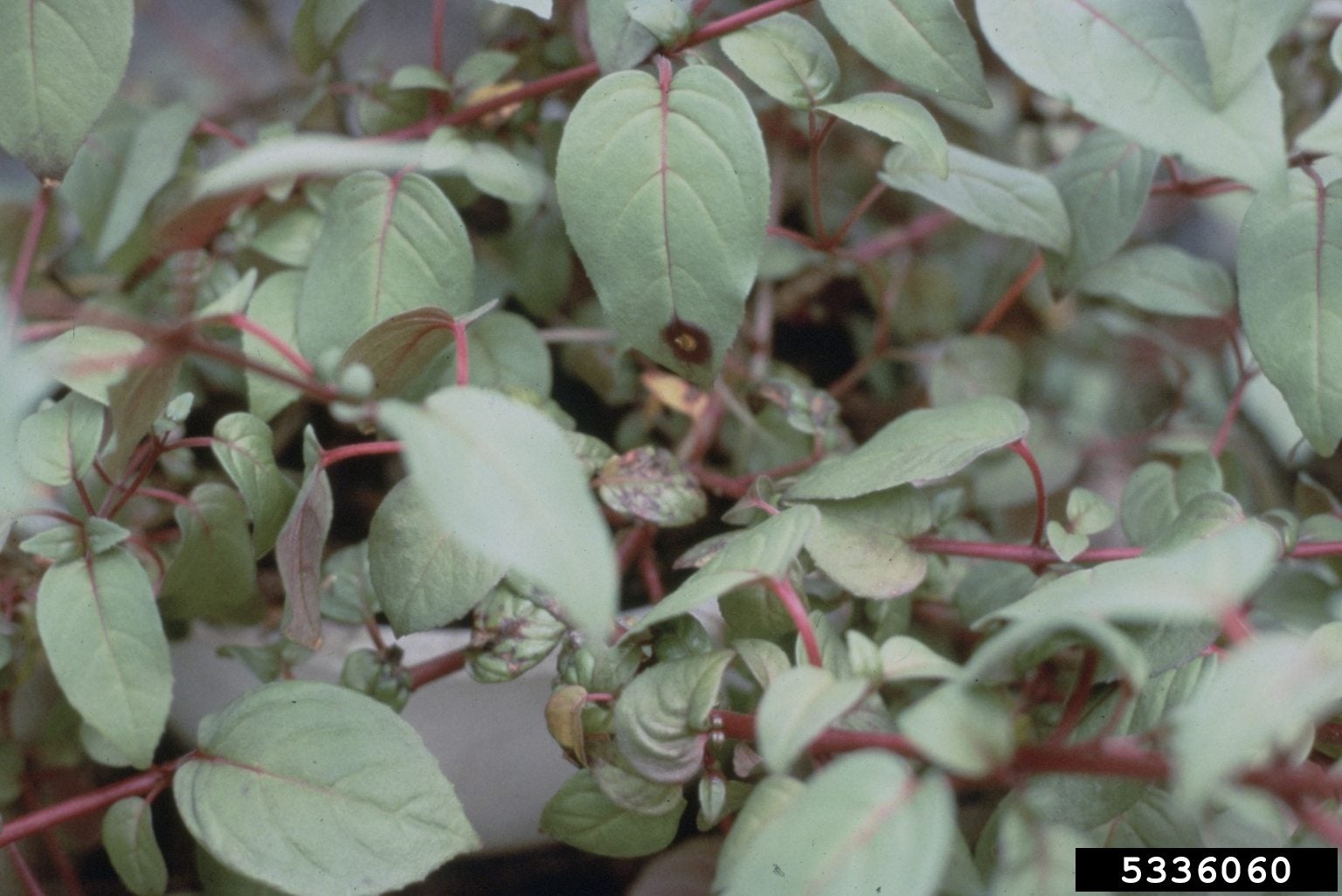Treating Fuchsia Leaf Diseases – How To Fix Diseases In Fuchsia Plants


In spite of their somewhat delicate appearance and dainty hanging blooms, fuchsias are hardy plants that, given proper care and the right growing conditions, produce nonstop blooms from spring until autumn. However, these delightful plants are susceptible to several common fuchsia diseases. Read on to learn more about the diseases of fuchsia plants.
Common Fuchsia Diseases
Diseases that affect fuchsia plants include both fungal and viral infections.
Fungal diseases of fuchsia
- Botrytis blight – Grayish brown mold is often the first sign of botrytis blight, a fungal disease that results in spotted, discolored flowers. In time, buds rot and fail to open. Leaves and stems wilt and drop from the plant.
- Rust – This fungal disease begins as small, orange-brown spore masses, primarily on the underside of fuchsia leaves. As rust disease progresses, upper leaf surfaces turn brown or yellow before dropping from the plant.
- Verticillium wilt – The foliage of fuchsias with verticillium wilt turns yellow, pale green, or brown, often beginning on one side of the plant. As the disease progresses, leaves shrivel and drop off the plant. This fungal disease is often deadly.
- Rot – Fuchsias are susceptible to root and crown rot, which causes leaves to become stunted and discolored before dropping from the plant. Root rot is easy to spot by the rotted, mushy roots. Rot, which is usually deadly, is generally the result of poorly drained soil, crowding, or overwatering.
Viral Diseases in Fuchsia Plants
Fuchsia plants are prone to several viral diseases, including tomato spotted wilt and impatiens necrotic spot virus. Symptoms include curled, spotted leaves and stunted growth. Both are spread by thrips, which are difficult to remove because they dig deep into blossoms, buds, and other hard-to-reach areas. Often, the best recourse for viral diseases in fuchsia plants is to destroy the diseased plant, which prevents the spread of disease to neighboring plants. Encourage beneficial insects such as ladybugs, lacewings, and pirate bugs, which help keep thrips in check. Insecticidal soaps, neem oil, and botanical, pyrethrin-based products may help. If possible, avoid toxic insecticides that kill bees and other beneficial insects.
Preventing and Treating Fuchsia Leaf Diseases
Treating fuchsia leaf diseases requires trimming and disposal of all diseased plant parts. Keep the area around the plant free of leaves and other debris. Thin plants to improve air circulation and water only at the base of the plant to keep the leaves as dry as possible. Fungicides are of limited effectiveness but may reduce rust and other fungal diseases if applied early in the season. Often, the best recourse for diseases in fuchsia plants is to start over with new, disease-resistant plants. Improve soil drainage and water properly to prevent fuchsia plant diseases.
Sign up for the Gardening Know How newsletter today and receive a free copy of our e-book "How to Grow Delicious Tomatoes".

A Credentialed Garden Writer, Mary H. Dyer was with Gardening Know How in the very beginning, publishing articles as early as 2007.